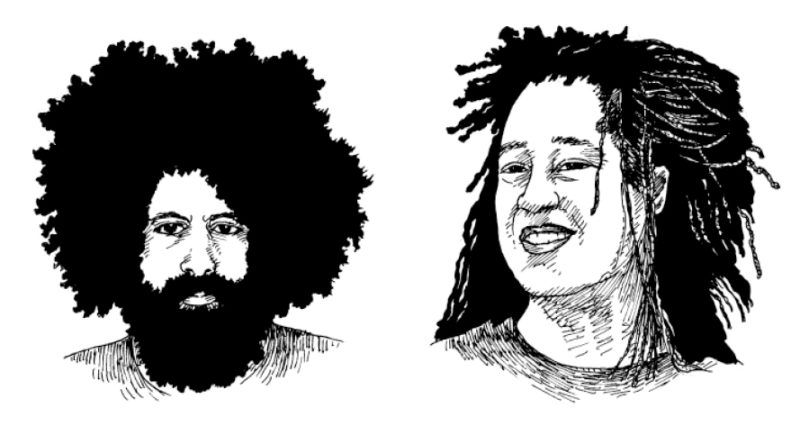A persistent hum, the radio, intermittent silence on the wire. These are all sounds that accidentally, but coincidentally, found their way into the conversation between Pamela Z, a composer–performer–media artist, and Reggie Watts, an internationally renowned vocal artist–musician–comedian. Watts and Z are both vocalists known for their use of looping technology and digital delays, which produce an effect akin to time traveling in sound, in real time. Onstage, Z and Watts achieve this, in very different manners and with varying degrees of improvisation, by rigging hardware or software to help slow down a moment, rejigger it, and spit it back out, different.
San Francisco–based Z—her legal surname, which is not short for anything and is not followed by any punctuation—is an interdisciplinary artist, making solo works combining a wide range of vocal techniques with electronic processing, samples, gesture-activated MIDI controllers, and video. She’s created installations and composed scores for dance, film, and chamber ensembles. Her work has been presented at venues and exhibitions including the Bang on a Can Marathon, the Venice Biennale, and the Dakar Biennale. Throughout her piece “Declaratives in the First Person,” some iteration of the phrase “I would like to think” recurs. Experiencing her work is akin to imbibing that track, thinking and feeling and charting the trajectory of a mind at work, in increments that are individually meaningful and that also accrue to something else that’s transformative and vast.
Watts is perhaps best known as the bandleader of The Late Late Show with James Corden, but he established himself as an innovative artist and performer in the decade and a half before his tenure on the late-night circuit. After being handpicked by Conan O’Brien to open on one of the host’s tours, Watts released his debut album, Why $#!+ So Crazy?, on Comedy Central Records in 2010. Since then he has gone on to compose for TV shows, including FX’s Louie and IFC’s Comedy Bang! Bang!, on which he appeared as the bandleader. His latest comedy special, Reggie Watts: Spatial, premiered on Netflix in 2016. The show begins with a bit in which Watts manipulates his voice to sound sped-up, as if fast-forwarded by a remote control, then transitions into an improvised loop song. His T-shirt reads Chaotic Good, and this phrase sums up his art: funny, kinetic, head-noddingly, chaotically good.
The day after their conversation, Z flew to Chicago to give a solo performance at a venue called Constellation as part of the Resonant Bodies Festival. The following week, she performed in the Other Minds Festival in San Francisco. Later that month, Watts debuted a...
You have reached your article limit
Sign up for a digital subscription and continue reading all new issues, plus our entire archives, for just $1.50/month.
Already a subscriber? Sign in





